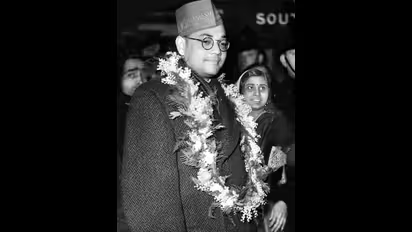India@75 moments: 1942, the year Indian National Army was formed

Synopsis
The Indian National Army (also known as the Azad Hind Fauj) was a military organisation founded in 1942 by Indian nationalists with the support of the Imperial Japanese Army to guarantee India's independence.
The Indian National Army (also known as the Azad Hind Fauj) was a military organisation founded in 1942 by Indian nationalists with the support of the Imperial Japanese Army to guarantee India's independence. Mohan Singh led the first INA; a former British Indian Army commander captured during the Malay war. Because of the conditions in the prisoner of war camps and the widespread hatred of the British, many prisoners of war volunteered to join the Indian National Army.
The Imperial Japanese Army and South-East Asia's ethnic Indian community lent their backing to the endeavour. Disagreements between Mohan Singh and the Japanese Army Command over the autonomy of the Indian National Army, however, resulted in the disbandment of the first INA in December 1942.
Although Mohan Singh's activities enraged the Japanese Army Command, they agreed to organise a second Indian National Army. Mohan Singh personally proposed Subash Chandra Bose for the position of leader.
Both the Indian diaspora in South East Asia and the Imperial Japanese Army were aware of his reputation as a devoted patriot. As a result, they were more amenable to the concept of Subash Chandra Bose leading a nationalist army. Subash Chandra Bose's efforts in India had caused the British government to jail him, but he escaped and arrived in Berlin in 1941.
Although the German leadership was sympathetic to his cause, logistical issues stopped them from supporting his efforts to raise an army to fight the British. However, the Japanese were ready to back him up, and on their personal request, Subash Chandra Bose came to Singapore in July 1943 to take command of the second Indian National Army, now known as the Azad Hind Fauj.
Also Read | India@75 moments: The non-cooperation movement of 1920
There was a surge of volunteers eager to join the INA once Subash Chandra Bose seized charge of the Azad Hind Fauj. Although Subash Chandra Bose consented to the INA remaining subject to the Japanese Army, he considered it a necessary sacrifice towards the ultimate objective of liberating India from the British Empire. The Azad Hind Fauj took part in Operation U-Go, the Japanese attack against British India in 1944. Although the INA had early success, they were forced to retreat after the battles of Imphal and Kohima (fought on April 4th, 1944), which resulted in a terrible loss for the Japanese Army at the hands of the British.
During this withdrawal, the INA lost a significant number of troops and equipment. A number of units were abolished or repurposed to feed into new divisions of the Japanese Army, which was in decline. Following Japan's surrender in World War II, the British seized the majority of the INA personnel. Subash Chandra Bose escaped captivity and was said to have perished in an aircraft crash in Taiwan in September 1945.
Also Read | India@75 moments: The Quit India Movement that united Indian people against British rule